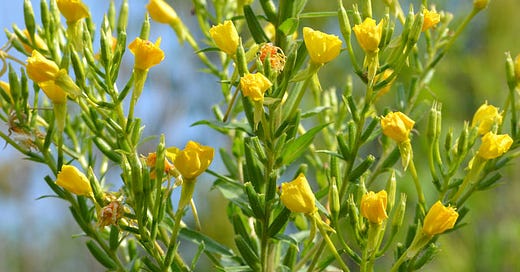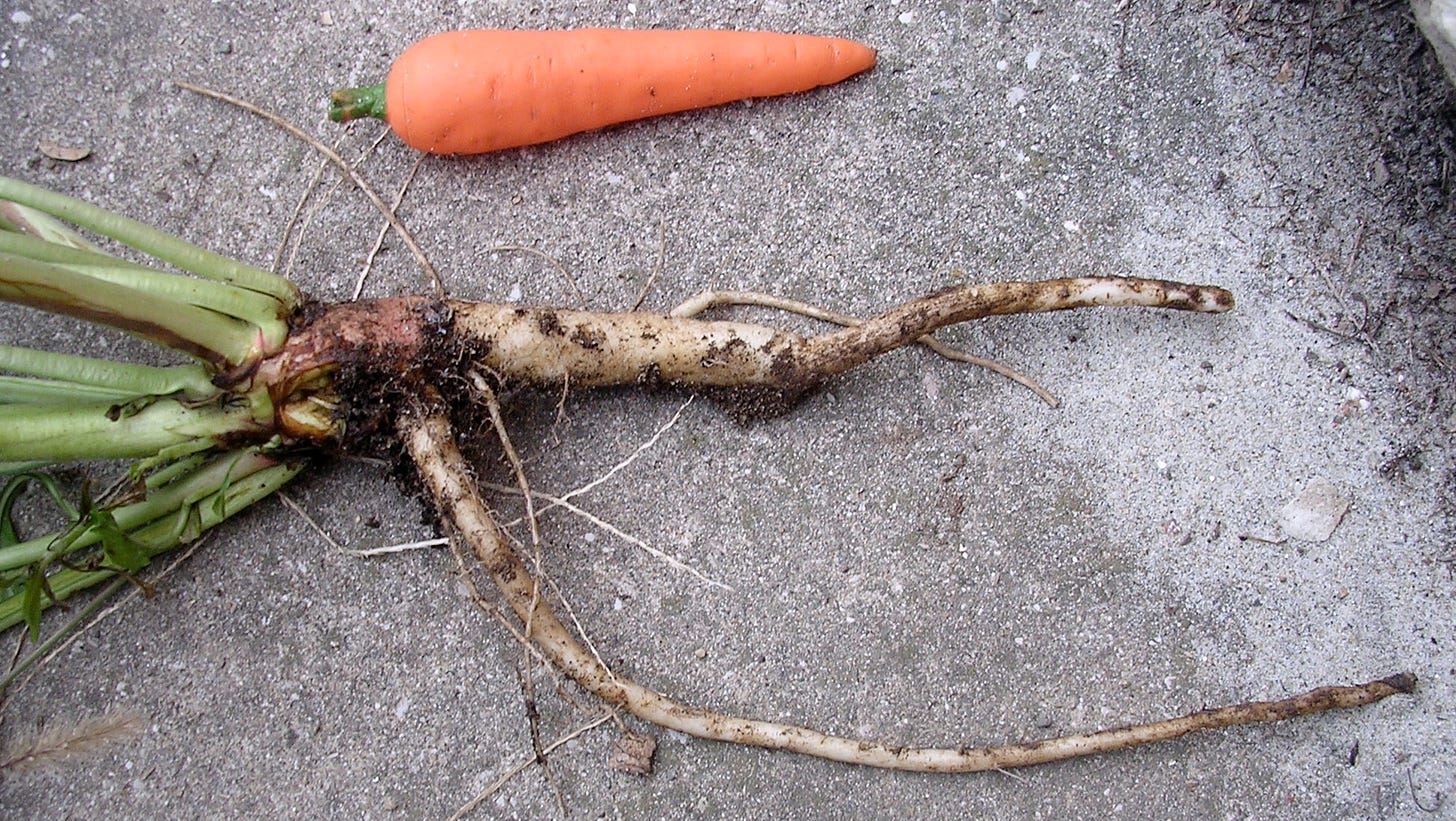Evening primrose (Oenothera biennis) is often considered an annoying weed at best and an invasive at worst. It occupies the ditches along the roads, first as a rosette and then as a towering beast, reaching up to 8 feet with an explosion of flowers erupting from the top. Evening Primrose favors disturbed areas and has an incredible capacity to cover extended patches of bare ground aggressively. This is partly because of its unique seed survival—there is documentation of evening primrose seed being viable for one hundred years or more.1
Unsurprisingly, this species thrives in disturbed ground and has found itself alongside anthropogenic disturbed habitats. Abandoned fields, abandoned gravel pits, croplands, and roadsides are all perfect places for the evening primrose seed to bloom into life. This biennial takes two years to complete its life cycle, quickly overtakes a landscape, and offers a buffer between early succession and perennial plants.
Indigenous people of eastern and central North America used evening primrose for various purposes, including food, medicine, and incense.2 The roots and leaves of evening primrose are edible and have been eaten across the globe.3 Evening primrose seeds in particular were used as food, incense, and medicine.4 The seeds contain an oil with various medicinal and nutritional uses.5 Today, the oil is most recognized as the product of evening primrose, but the roots can be large and provide sizeable amounts of calories in poor-nutrient soils. The roots were often boiled and eaten like potatoes, as the Cherokee did. While the occasional weeding might pull up a thick and stringy-looking root, timing the harvesting of the primrose root is crucial to harvest the largest root possible. To harvest massive, peppery roots like these, harvest in the fall of the first season. The energy stored in the root during the first year is later used in the second year, leaving little for the person harvesting.
Oenothera may have spread from Central to North America between the successive ice ages of the Pleistocene epoch. This genus's prolific genetic diversity may be partly due to hybridization between survivors of different colonizing events. Common evening primrose is now endemic to much of North America, ranging from Mexico to Florida, north to central Ontario and Quebec, Canada, and west to North Dakota and Oklahoma. It can also be found along the Pacific coastline of North America.
From its origins in North America, O. biennis has been moved by man and established on all other continents, excluding Antarctica. Its first documented introduction to Europe was in 1870 in England, where it was imported for its medicinal qualities. However, it also had a short stint as a root vegetable, alongside other native crops with limited popularity in Europe, such as the sunchoke. I mean, this shouldn’t be a surprise. With massive roots like these, why weren’t the ever improved? Well, people tried.
Keep reading with a 7-day free trial
Subscribe to The Poor Prole's Almanac: Restoration Agroecology to keep reading this post and get 7 days of free access to the full post archives.





